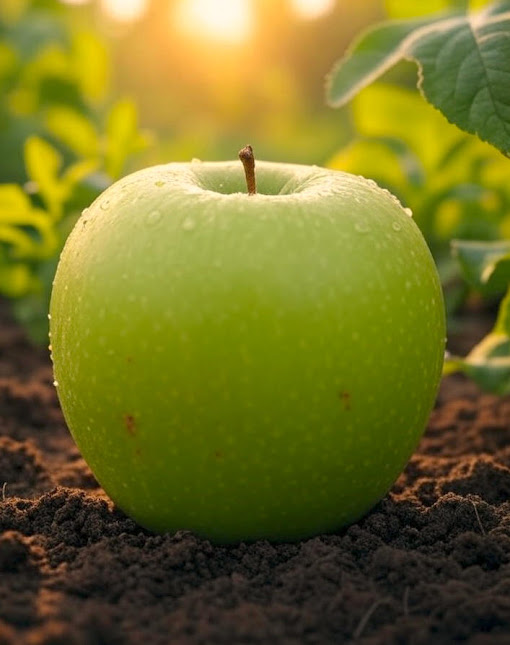The H24 line makes perfect sense to me. Hermès hadn’t released an original masculine-leaning fragrance in years, and Jean-Claude Ellena had stepped down from his role as in-house perfumer. In his place is his protégé, Christine Nagel, formerly of Jo Malone, tasked with inviting the 21st-century man into the world of Hermès leather and luxury. She had every reason to feel confident, having crafted successes for Dior, Armani, Cartier, and John Galliano. But how does one follow Terre d’Hermès? Her challenge was formidable.
H24 debuted in 2021 and smells like a postmodern fougère. To me, it smells exactly like the image above. Cold, metallic, faintly green-woody, vaguely fruity, and unmistakably industrial, it reimagines the classical aromatic fougère of the late 20th century. Lavender and herbal notes are cleverly disguised beneath a forbidding, austere base that recalls the freshly inked pages of a glossy fashion magazine from 2003. Nagel’s follow-up, H24 Eau de Parfum (2022), deepens the mossy-woody dimension, while H24 Herbes Vives (2024) explores the green-fruity angle. There’s something in the line for everyone, but the original EDT is my starting point. So, here we go with a brief review.
The internet has buzzed with a handful of recurring descriptors: metallic, sharp, aldehydic, pear, banana, bitter, boring, simplistic, forgettable. Some of these I agree with. Yes, it is slightly metallic. That effect comes mostly from how the snowy aldehydes have been pared down to their coldest essence and arranged like olfactory spines across the sterile calm of the opening. I catch a trace of what I can only call a “fantasy fruit,” not quite pear and not quite banana, but something green and fruity that offers a soft, ethereal sweetness. There’s also a whisper of narcissus, the honeyed scent of yellow daffodils drifting in on a stale breeze. And sage. Lots and lots of synthetic sage, resting on an elegant mineral-amber base. Very "designer frag," but still compelling.
Some reviewers call H24 boring or uninspired, and I can understand why. It’s a fragrance for grown-ups. No sugary bombast, no candy, no aquatic freshness, no obvious spice. Nagel’s instinct was to take the traditional fougère structure, built around lavender, coumarin, and musk, and pair it with something that smells nothing like any of them. Then she let the unfamiliar take over. This isn’t a fougère in the traditional sense so much as a meditation on the quiet dignity of modern decay. H24 evokes the image of an abandoned office tower, sealed so tightly it feels airless. Evening sunlight filters across the concrete floors and drywall, casting a tranquil prism of green, blue, and gold. In the first hour, it smells like looking out a window at rain falling on leaves. It’s peaceful, nearly spiritual, and you linger there, thoughtless. You feel no desire to move.
By hour three, the light shifts. That same sun casts a paler, colder yellow, throwing green shadows into sterile blue rooms. By hour six, the scent becomes a memory of the world before the fall: metal paperclips, bitter and dry; publishing ink and glossy magazine paper warmed by a vent, releasing their chemical perfume. It smells like living inside an issue of Italian Vogue. I must be an ink addict, because I can’t get enough of it. And here, it’s not just the ink. It’s the paper, too. Every glossy magazine has its own scent, no two quite alike. Some are faint and clean, others bold and slightly rancid, the ink sterile and the paper faintly alive. Some are delicate, others hit you with a glorious wall of aroma, even tinged with a whisper of binding glue.
I come away from H24 thinking it’s excellent. Challenging, yes, but excellent. This is not your crowd-pleasing Terre d’Hermès. This is something new, a distinct shape. It echoes the past but offers something entirely original. Lavender becomes a solar chill that feels synthetic and abstract. Yellow florals merge into a bittersweet paper accord. Sage straddles the line between herbal and chemical. A soft woody amber and mineral base molecule ties it all together into an olfactory glyph for forgotten spaces. Perfume as poetry, bottled in a minimalist flask with a hidden atomizer stem, refillable, efficient, and unmistakably Hermès. Was this what the brand needed to make waves again? Maybe, maybe not. But I’m glad Nagel made it, and I really, really like it.
.jpeg)











